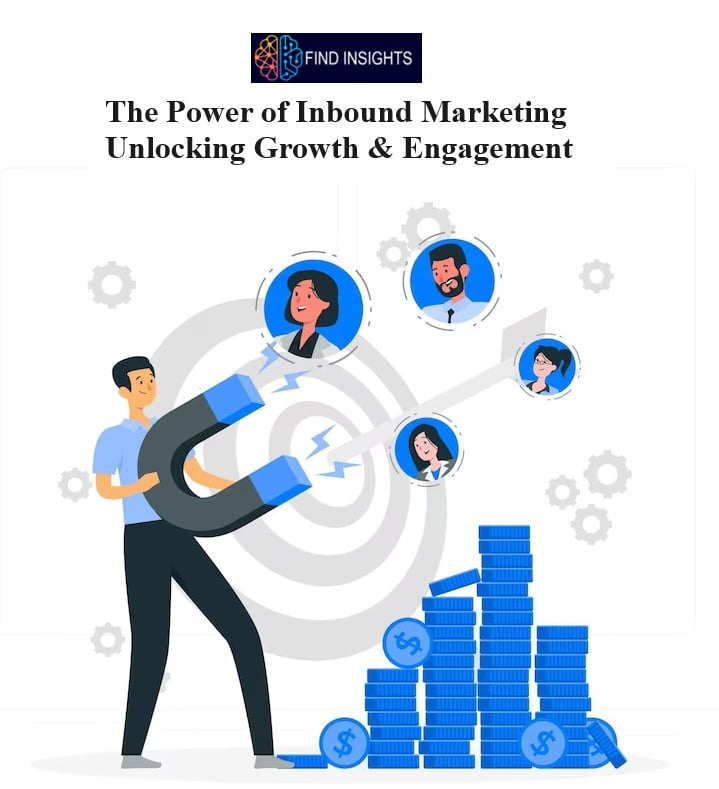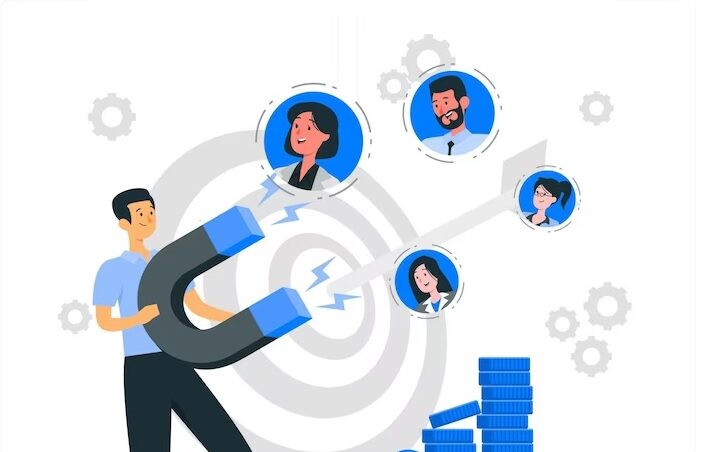
Introduction:
In the ever-evolving landscape of digital marketing, one term that has gained significant prominence and acclaim is “Inbound Marketing.” In this comprehensive guide, we will delve into the depths of what inbound marketing truly is, how it differs from traditional marketing strategies, and why it is the key to not only gaining a competitive edge but also establishing a strong online presence that can outrank your competitors.
Understanding Inbound Marketing
Inbound marketing is a transformative approach that focuses on attracting, engaging, and delighting your target audience by creating valuable content and experiences tailored to their needs and preferences. Unlike outbound marketing, which relies on interruptive tactics like cold calling and direct mail, inbound marketing is all about establishing meaningful connections with your audience through content that addresses their pain points and interests.
The Core Principles of Inbound Marketing
Inbound marketing is anchored on four fundamental principles that make it a powerful strategy for businesses of all sizes:
1. Attract
The first step in inbound marketing is to draw your ideal audience to your digital doorstep. This is accomplished through various tactics such as:
- Content Creation: Craft compelling blog posts, articles, videos, infographics, and more that resonate with your target audience.
- Search Engine Optimization (SEO): Optimize your content for search engines to ensure it ranks high on search result pages.
- Social Media Marketing: Share your content on social platforms to increase visibility and engagement.
2. Engage
Once you’ve attracted visitors to your website, the next step is to engage them with valuable content and interactions. Engaging strategies include:
- Email Marketing: Nurture leads and build relationships through personalized email campaigns.
- Social Media Engagement: Interact with your audience, respond to comments, and participate in meaningful conversations.
- Chatbots and Live Chat: Provide instant assistance and engage with visitors in real-time.
3. Delight
Inbound marketing doesn’t end with a conversion; it extends to creating exceptional experiences for your customers. Delighting customers involves:
- Continuous Content Delivery: Keep providing valuable content, tips, and resources even after the purchase.
- Surveys and Feedback Loops: Gather insights from your customers to enhance your products or services.
- Customer Support: Offer exceptional support to resolve issues promptly and efficiently.
4. Attract Promoters
Happy customers become brand advocates. Encourage your delighted customers to become promoters by:
- Referral Programs: Incentivize customers to refer friends and family to your business.
- User-Generated Content: Showcase testimonials, reviews, and user-generated content on your website and social media.
How Inbound Marketing Outperforms Traditional Marketing
Now that we’ve grasped the essence of inbound marketing, let’s explore why it has the potential to outrank traditional marketing strategies:
1. Cost-Effectiveness
Inbound marketing can be considerably more cost-effective than outbound methods. Creating high-quality content and optimizing it for search engines might require an initial investment, but the long-term benefits far outweigh the costs. In contrast, traditional marketing tactics such as TV ads and billboards can be prohibitively expensive.
2. Targeted Reach
Inbound marketing allows you to precisely target your ideal audience. Through keyword research and data analysis, you can create content that speaks directly to the needs and interests of your potential customers. This targeted approach increases the chances of conversion.
3. Measurable Results
In the digital age, data is invaluable. Inbound marketing provides you with comprehensive data and analytics tools to measure the effectiveness of your campaigns. You can track website traffic, conversion rates, email open rates, and much more. With this data, you can continually refine your strategy for optimal results.
4. Building Trust and Credibility
By consistently delivering valuable content and solving your audience’s problems, you build trust and credibility over time. Inbound marketing positions your brand as an authority in your industry, making it more likely for customers to choose your products or services.
5. Adaptability
This strategies can adapt to changing market conditions and consumer preferences. Traditional marketing methods often struggle to keep up with the rapidly evolving digital landscape.
Embracing Inbound Marketing for Your Business
To succeed in today’s competitive digital landscape, businesses must embrace inbound marketing. Here are some steps to get started:
- Develop a Content Strategy: Create a content calendar that outlines your topics, keywords, and publishing schedule. Ensure your content provides value and answers your audience’s questions.
- Invest in SEO: Optimize your website and content for search engines to increase your visibility in organic search results.
- Leverage Social Media: Establish a strong social media presence to connect with your audience, share your content, and engage in conversations.
- Email Marketing: Build and nurture your email list to stay in touch with your audience and provide them with valuable insights.
- Monitor and Analyze: Continuously monitor your marketing efforts, analyze data, and adjust your strategy based on the results.
In conclusion, inbound marketing is a game-changer in the world of digital marketing. Its focus on attracting, engaging, and delighting customers makes it a powerful strategy that can outrank traditional marketing methods. By understanding the core principles and embracing its techniques, you can position your business for sustainable growth, increased brand visibility, and enhanced customer loyalty.
LIKE WHAT YOU’RE READING?
CHECK OUT SOME OF OUR OTHER GREAT CONTENT HERE:
- UNDERSTANDING DIGITAL MARKETING
- DECODING DIRECT MARKETING WITH EXAMPLES
- DEFINITION OF MARKETING MANAGEMENT
- ROLE OF BLOGS IN MARKETING
- MEANING OF MARKETING SEGMENTATION
- IMPACT OF MARKETING ON SOCIETY
- PERFORMANCE MARKETING – A BEGINNER’S GUIDE
- EFFECTIVE BRANDING METHODS
- UNDERSTANDING CONSUMER BEHAVIOR
- HOW TO INCREASE SALES?
- HOW AI IS USED IN DIGITAL MARKETING?
- 5 BEST SOCIAL MEDIA PLATFORMS FOR BUSINESS IN 2022
- WHAT IS THE DEFINITION OF ECOMMERCE
- WHAT IS AFFILIATE MARKETING? (HOW TO GET STARTED)
- 5 BEST TOOLS FOR DIRECT MARKETING WITH ADVANTAGES IN DETAIL
- 5 BEST MARKETING STRATEGY IN PRODUCT LIFE CYCLE FOR 2023
- 8 STRATEGIES OF RETAIL MARKETING TO DRIVE SALES
- WHAT IS THE IMPORTANCE OF MARKETING IN A BUSINESS?
- DEFINITION OF B2C MARKETING WITH EXAMPLE
- THE ROLE OF MARKETING IN STRATEGIC PLANNING




1 Comment